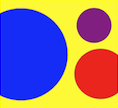A Black Flame
Updated 9 November 2023

Introduction
I joined the Department of Scientific and Industrial Research in 1974 where I initially worked on atomic spectrometry. This was mostly atomic absorption spectrometry and atomic emission spectrometry of solutions to determine their elemental composition. I worked for several years with Dr Reiner Goguel, an expert on atomic absorption spectrometry.
The DSIR had several open days and various experimental demonstrations were developed to illustrate scientific principles.
One of the most beautiful demonstrations was the "Black Flame". This was a simple demonstration of Atomic Absorption. Atomic absorption spectrometers were used to determine the metal content of solutions and solids. The technique was of great value, in a wide range of disciplines, as the metal content of samples could be measured by comparison with standards.
The DSIR open day demonstration
The original demonstration used two lamps, each inside spherical translucent lamp housings. One lamp was a sodium discharge lamp, commonly used for street lighting. The other was a 150 watt tungsten lamp run at about half voltage. Both lamps, in their housings, looked yellow.
A bunsen burner was positioned in front of the lamps The burner was set above a beaker of acidified sodium chloride solution. Adding a few granules of zinc caused the solution to gently bubble. The bursting bubbles produced a salt solution aerosol which passed through the base of the burner into the flame.
The flame turned yellow because the sodium in the flame produced a strong emission at 589nm. This is an electron transition from the ground state to the first excited state of a sodium atom. When viewed using the tungsten lamp as a yellow background the flame emission was visible. When viewed using the sodium lamp as a yellow background a black border was seen around the yellow flame. This is atomic absorption. The light from monochromatic sodium lamp causes neutral sodium atoms around the flame border to be excited. The excited atoms re-emit the light as fluorescence, but in all directions. Some of this energy is also lost as heat, as collisions of the excited atoms with the flame gases results in fluorescence quenching. The net effect is the flame border looks black. The degree of darkening depends directly on the sodium concentration in solution.
An updated demonstration
The sodium lamp, in its housing, is the same one used for the DSIR demonstration. The power supply is the same. The burner is a butane torch sometimes used in gourmet cooking. A portable humidifier is used as an aerosol source. I obtained mine from Jaycar for $6. Similar items can be found at garden centres as decorative water displays. A salt solution is added to the humidifier base - about a gram of NaCl to 200ml water. No acidification is needed.
The butane torch is lit. The flame passes above the humidifier exit port. The sodium lamp is set in the background.
The photos show flame atomic emission and atomic absorption. The ground state sodium atoms are seen as a black zone in the cooler border of the flame


JEPSPECTRO - Home Page
Email: replace at with @
jepattersonatactrix.co.nz
Click the photos below to enlarge. Use the browser "back control" to return.
 Butane torch and humidifier.
Butane torch and humidifier.
 Humidifier nebulising tap water.
Humidifier nebulising tap water.
 Flame emission - tap water.
Flame emission - tap water.
 Flame emission - salt water.
Flame emission - salt water.
 Black flame - Sodium lamp behind.
Black flame - Sodium lamp behind.
 Black flame - Sodium lamp behind
Black flame - Sodium lamp behind